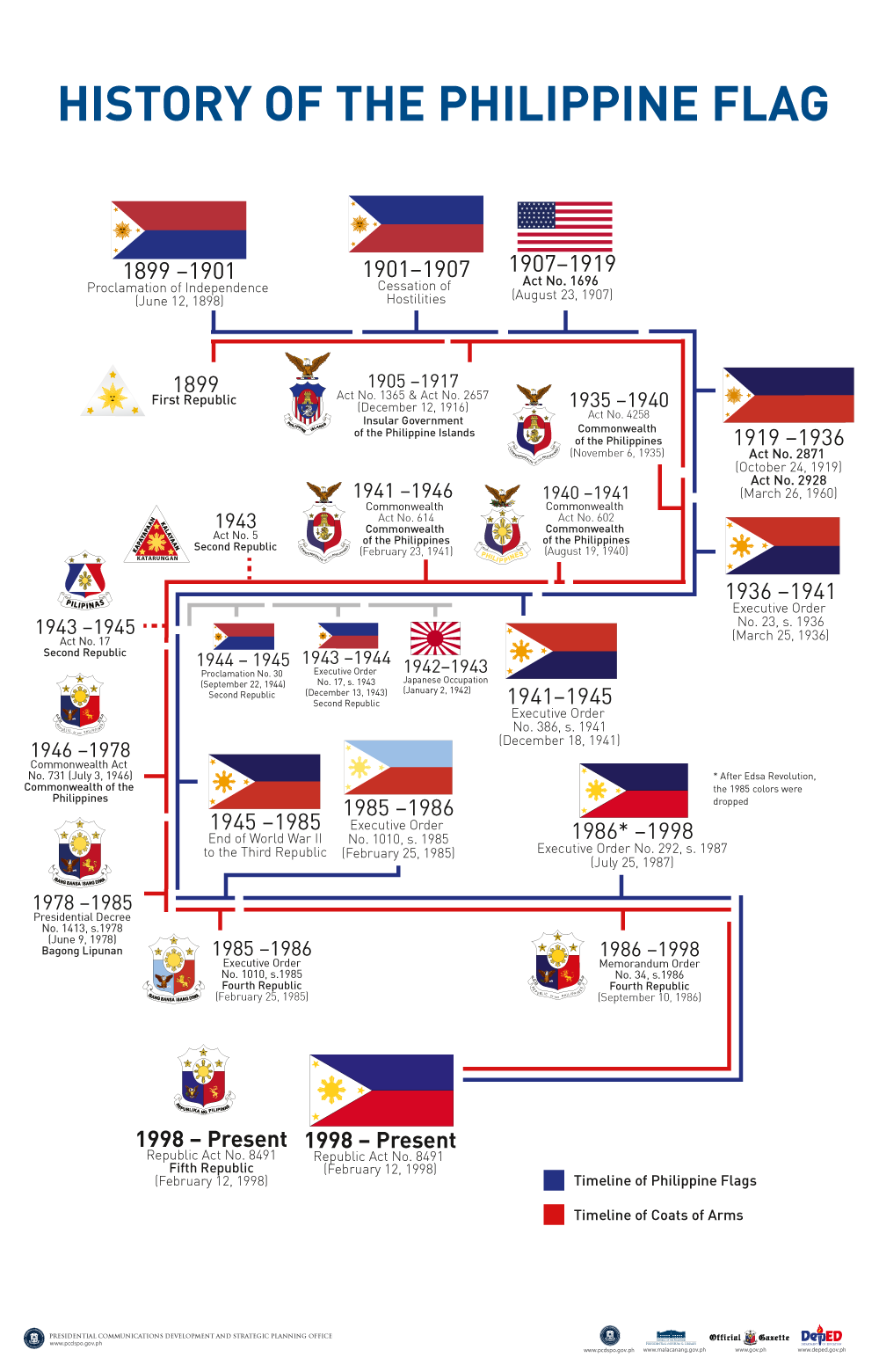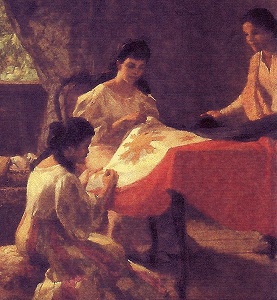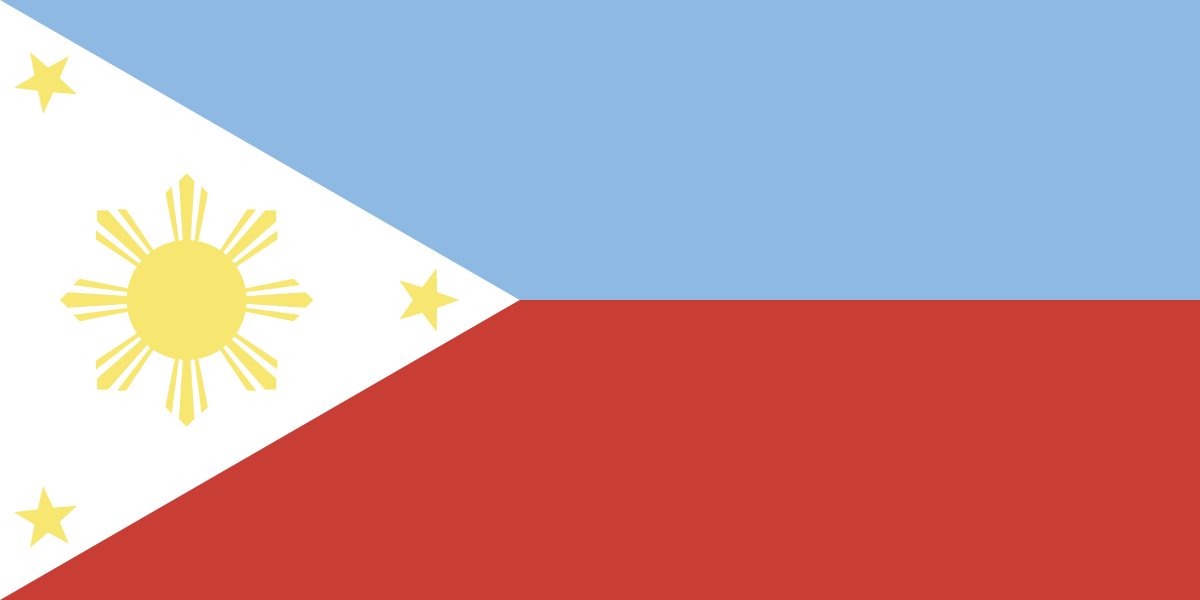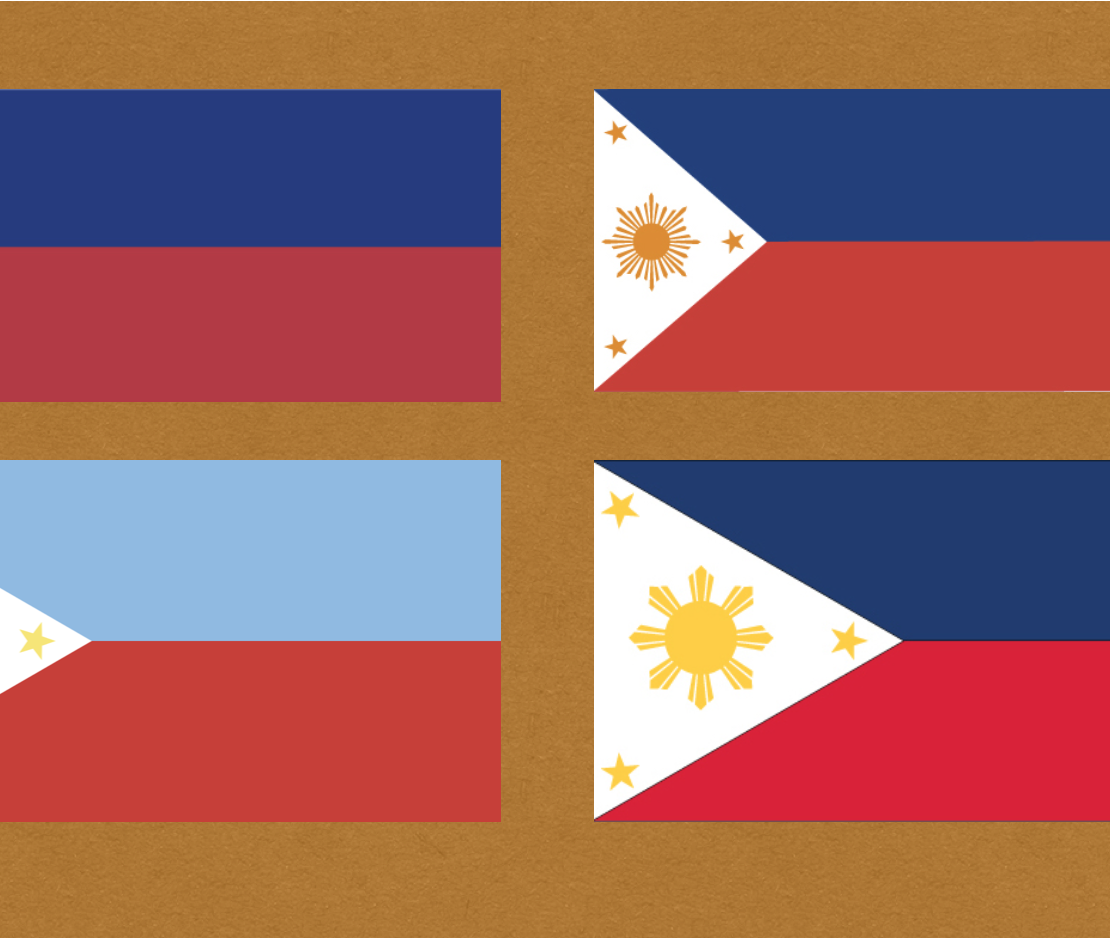Did you know that the horizontal blue stripe on the Philippine flag was once in the shade of a bright and delicate sky blue?
Exactly a year before he was overthrown, former president and dictator Ferdinand Marcos issued Executive Order (EO) 1010 declaring the then dark shade of the flag’s blue field to be changed to a lighter shade. “Lighter than navy blue but darker than sky blue or azure,” as the National Historical Commission of the Philippines (NHCP) puts it.
While this version might seem attractive to pastel fans out there, it was only hoisted for a short time—a time enough to confuse citizens and push the authorities who replaced Marcos to officially declare a final basis on the true shade of blue in the Philippine flag, after a century of confusion.
Flag controversy
Before Cable No. 80173 was declared as the basis of the official shade of blue of the Philippine flag by the Congress in the Flag and Heraldic Code of the Philippines, the top field donned many shades: dark blue, American blue, Cuban blue, navy blue, and royal blue, among many others. There was an obvious conflict that even those who are not sensitive about colors could point out; the Philippine flag is very inconsistent.

According to Alvin Alcid, chief researcher of the NHCP, this conflict is rooted in the American period, when the country marked the Flag Restoration Day on Oct. 22, 1919.
“Filipinos began again to produce flags, but without standards. There are some with faces and the shades were inconsistent,” he told Nolisoli.ph. He added that the inconsistency was confirmed by Lorenza Agoncillo, daughter of Marcela Agoncillo, to historian Encarnacion Alzona herself.
Marcela Agoncillo’s flag, the one that was formally unfurled by Aguinaldo during the proclamation of Philippine independence 121 years ago, had two major design differences from our current flag: the eight-rayed mythical Philippine sun with a face and the use of Cuban blue, the same shade of blue found on the Cuban flag. This was stated in an anectodal evidence by historians.

In 1919, when preparations for the Flag Restoration Day began, the flag started adopting the navy blue color found on the American flag, which might be due to the fact that it is the only cloth available in most stores at the time.
This navy blue shade became the standard version of our flag. Quezon released an executive order on its specifications in Mar. 25, 1936 but “the colors of the flag were not defined in detail,” his grandson and columnist Manuel Quezon III said in an article. This flag was also the one used during the recognition of Philippine independence by the Americans after World War II on July 4, 1946. This remained the customary flag until Marcos’ E.O. 1010. which led the pale sky blue shade to become the “de facto” official color.

But in between those years, after the Philippines gained independence from its colonizers and before Marcos decided to change the flag colors, there were already ongoing debates in the Heraldry Commission about the flag’s blue shade. In an article by historian Ambeth Ocampo, he stated that before the navy blue shade was standardized, Domingo Abella, former director of the National Archives and a member of the National Historical Institute, said that when the flag was allowed to fly after years of suppression, “flag makers didn’t have a supply of light blue cloth. Thus, they used dark-blue cloth instead, perpetuating the mistake.”
Filipino artist Galo Ocampo, on the other hand, said in a letter to the Minister of Education in 1985 that the Heraldry institute adopted the dark blue in 1955 after consultations with General Aguinaldo. “It seems the Heraldry Institute (then headed by him) showed the aging Aguinaldo a color chart and asked him to think back of how the original flag looked like Yale Blue,” Ocampo wrote.
Historian Teodoro Agoncillo decided to clarify the flag color controversy in a documented interview with first president Emilio Aguinaldo where the latter said that “the blue color of the flag is bughaw, neither azul oscuro nor azul marino. However, according to Chris Antonette Pugay’s The Controversial Philippine National Flag, this navy blue-like shade did not match Juan Luna’s depiction of the flag in his May 21, 1899 painting “Monograph” and Mariano Ponce’s letter to Ferdinand Blumentritt where he describe the blue color of the flag “as blue as the sky.”
Flag and Heraldic Code of the Philippines
To put an end to the confusion surrounding the color blue of the Philippine flag as well as highlight the importance of respecting the flag, the Congress passed the Flag and Heraldic Code of the Philippines or Republic Act 8491 on Feb. 12, 1998. It established not only rules in making new and disposing ruined flags but also designated royal blue or Cable No. 80173 (or Pantone 286C) as the official color. The colors for the white, red, and golden yellow fields were also finalized.
The royal blue shade serves as a compromise to the many colors historians, government officials, and artists suggested throughout history. This decision is a great way to put an end to decades-long arguments, fully embodying what the flag’s blue area actually stands for, which is common unity, peace, and the noble desires of the Filipino people.
Get more stories like this by subscribing to our weekly newsletter here.
Read more:
Historical proof of Aguinaldo’s betrayal now at Leon Gallery
Jose Rizal’s “extremely rare and historically important” sculpture will be auctioned
Local heritage sites are being restored by this unlikely group of youngsters
A boceto of Juan Luna’s “Spoliarium” was unearthed in Europe
Writer: AMIERIELLE ANNE BULAN




